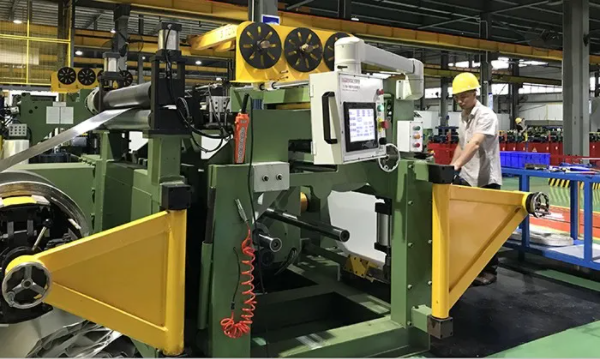Foil winding is a technique widely used in the construction of high-performance transformers. It involves the use of a continuous strip of thin copper or aluminum foil, which is carefully wound in multi-layered configurations to create the transformer windings. This article explores the various advantages of foil winding and its application in the manufacturing of high-performance foil winding transformer.
One of the key advantages of foil winding is its ability to provide high efficiency in transformer foil winding operation. The use of foils allows for better heat dissipation and improved current distribution. Compared to traditional wire windings, foil windings offer lower resistance and reduced proximity effects. This leads to significantly lower energy losses and increased overall efficiency of the foil transformer, resulting in reduced energy consumption and cost savings.
High-performance transformers often operate under demanding conditions, generating substantial amounts of heat. Foil winding helps optimize heat dissipation due to its larger surface area compared to traditional wire windings. This increased surface area allows for better cooling, as it facilitates efficient heat transfer to the surrounding environment. Additionally, foil windings can be designed with additional cooling channels, further enhancing heat dissipation and ensuring optimal temperature management within the foil winding transformer.
Foil windings offer superior mechanical strength compared to wire windings. The continuous strip of foil provides improved structural integrity, minimizing the risk of deformation or damage during transformer operation. This enhanced mechanical strength allows manufacturers to design foil transformers with smaller dimensions without compromising performance. Consequently, foil-wound transformers demonstrate a higher power density, making them ideal for space-constrained applications where size and weight reduction are crucial.

Electrical noise and electromagnetic interference can adversely affect the operation of sensitive electronic devices. Foil winding minimizes these issues by reducing the inductance and associated voltage spikes within the transformer. The consistently spaced turns in foil windings, along with reduced proximity effects, result in a more balanced and controlled electromagnetic field, thereby reducing electromagnetic interference and ensuring cleaner electrical output. This is particularly important in applications such as power distribution, industrial transformer foil winding machine, and audio amplifiers, where interference can compromise performance.
Foil winding in transformers offers a multitude of benefits and applications within the realm of electrical engineering. This technique involves using thin strips of conductive material, typically copper or aluminum, wound in multiple layers to create coils that efficiently transfer energy between different voltage levels. One key advantage of foil winding is its ability to reduce resistance and losses, resulting in higher efficiency and improved performance of the transformer. Additionally, this method allows for precise control over the distribution of current within the coil, leading to better thermal management and increased overall reliability. Foil winding also enables designers to achieve compact designs with high power density, making it ideal for applications where space is limited but high performance is crucial. Overall, foil winding in transformer is a versatile and effective solution that plays a vital role in optimizing energy transfer systems across various industries.
In conclusion, foil winding provides numerous advantages when used in the construction of high-performance transformers. Its enhanced efficiency, lower energy losses, improved heat dissipation, compact design, mechanical strength, and reduced electrical noise make it a preferred choice in various industries. The versatility of foil winding allows manufacturers to design transformers customized to meet specific application requirements. As technology continues to advance, foil winding will likely remain an integral part of transformer foil winding design, enabling the development of more efficient and reliable electrical systems.